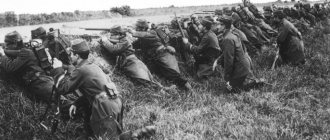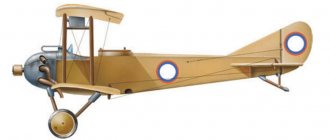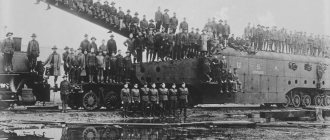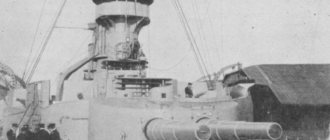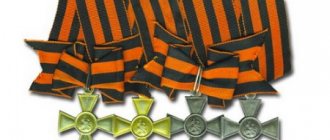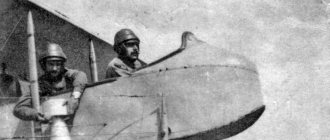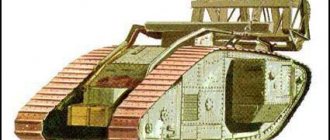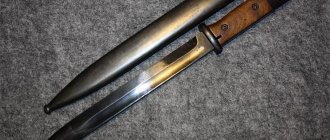For World War I operations in the Dardanelles, see Dardanelles Campaign.
| This article requires additional links for verification . |
| Dardanelles operation | |
| Part of the Anglo-Turkish War | |
| Squadron under Sir J. T. Duckworth crossing the narrow Dardanelles Canal, 19 February 1807, Thomas Whitcombe | |
| Result | Ottoman victory |
| vthe Russian-Turkish War of 1806–1812. | |
| |
Operation Dardanelles
was an unsuccessful attack by the British Royal Navy against the coastal fortifications of Constantinople. The operation was part of the Anglo-Turkish War.
In 1806, the French envoy Sebastiani was sent to Constantinople with orders to achieve the re-entry of the Ottoman Empire into the Napoleonic Wars. Sultan Selim III began preparations for war with Russia after Sebastiani's positive reception. Russian Emperor Alexander I, was alarmed by these events as he had already deployed significant forces in Poland and East Prussia to fight the advancing French troops under Emperor Napoleon I. Alexander asked for British help in keeping the Ottomans out of the war.
The British army was too small and insufficient for the request, so naturally fell to a powerful navy to satisfy Alexander's demands. The ships immediately available for this task were HMS Canopus, HMS Standard, HMS Thunderer, HMS Glatton, and the two bomb ships HMS Lucifer and HMS Meteor, [2] under the command of Vice-Admiral Cuthbert Collingwood, Commander-in-Chief of the British Mediterranean Fleet, sailing to the Dardanelles and prepared for the upcoming attack.
Meanwhile, the British ambassador in Constantinople, Arbuthnot, demanded that the Ottoman government evict Sebastiani and added that if the Ottomans rejected the ultimatum, the Mediterranean fleet would attack.
The actual force Collingwood selected for the operation was small—only eight ships of the line and four frigates. In addition, four Russian battleships under the command of Admiral Dmitry Senyavin were sent to support the British, but only joined Duckworth after leaving the Dardanelles. Admiral Duckworth, in command of the British, was ordered to bombard Constantinople and capture the Ottoman fleet.
Background [edit]
In anticipation of war between Russia and the Ottoman Empire, Britain sent Sir Thomas Louis from Cadiz to the Mediterranean on November 2, 1806. On 21 November he reached Tenedos, near the Dardanelles Strait, made a short trip to Constantinople and returned to the Strait. The Ottomans declared war on Russia on December 30, 1806, and Britain sent Admiral Sir John Duckworth to Royal George
100 guns from Cadiz on January 15, 1807 to the Mediterranean.
Receiving 98 Windsor Castle
and
Repulse
74 guns from Gibraltar,
Pompe
74 and Ajax 74. from Malta as a replacement for the Russian fleet under Senyavin, which was still in the Adriatic, Duckworth proceeded to Tenedos.
Despite the British ultimatum, Selim declared war on Russia on 27 December. On 29 January 1807, the
40-gun Endymion A formal declaration of war had not yet been sent by London, and the two powers remained technically allies.
On February 10, Duckworth's fleet concentrated at the mouth of the Dardanelles. He met Louis's ships and returned to Tenedos on February 1, where Duckworth's ships met. While still technically not at war, the Ottomans detained Duckworth for symbolic negotiations. The presence of British and Russian ships at the mouth of the Dardanelles prompted Sebastiani and his French engineers to begin improving the Ottoman coastal batteries.
Destruction of the Turkish fleet 19
February
1807
, color engraving after Thomas Whitcomb
Naval maneuvers and combat[edit]
On the morning of 19 May, Seyid Ali, Kapudan Pasha, or Grand Admiral of the Ottoman Navy, took a squadron of 8 battleships, 6 frigates and 55 smaller vessels that slipped out of the Dardanelles on the morning of 19 May. , moved to a position between the island of Mavro on the Asian coast and prepared to attack the island of Tenedos, which served as a base for the Russian fleet in the Aegean Sea. Senyavin, anchored in Tenedos, observed the Ottoman actions and that evening directed his fleet south of Tenedos, intending to turn north towards the mouth of the Dardanelles to prevent Seyyid Ali's squadron from retreating back to the safety of the strait. [3]
Unfortunately for Senyavin's fleet, there was a calm wind on May 20, and the Russians were unable to either reach the Dardanelles or return to Tenedos. At Tenedos, Seyid Ali took advantage of the weakened defenses and launched an attack on the Russian naval base with gunboats and ground forces. However, the Russian garrison on Tenedos turned out to be quite capable of defending the base and pushed the Turks back with heavy losses. [3]
On May 21, rain and squalls with northeast winds occurred in the Aegean Sea. Senyavin abandoned his plan to block the retreat of the Ottoman squadron and returned to Tenedos. The next morning, while anchored at the naval base, Senyavin noticed that Seyyid Ali's squadron was anchored to the north within his line of sight. Neither flotilla attempted to move that morning due to the prevailing winds, but at about 2 p.m., when the wind shifted to the southwest, Senyavin ordered his fleet to weigh anchors and move to attack the Turks. At the same time, Seyyid Ali ordered his squadron to weigh anchor and flee to the safety of the Dardanelles. [4]
At approximately 18:00, the Russians caught up with the sternmost of the Ottoman ships. Russian frigate Venus
stayed under the stern of the heavier Turkish battleships and attacked relatively safely.
The Russian battleship Uriel overshot the Turkish second-in-
command and carried off the boom-boom.
The Russian battleship Tverdy, under
the command of Admiral Senyavin, passed between the battleships of the Turkish Rear Admiral Baker Bey and Seyid Ali and fired salvo after salvo at close range. [5]
As evening fell, the two fleets mixed and entered into battle at the mouth of the strait. At times, some Russian ships, including the battleship Senyavin, veered offshore within range of the Turkish forts and their coastal batteries. The battle continued until about 9 pm, with most of the Turkish ships escaping deep into the safety of the strait. However, three Ottoman ships remained outside the strait, as if they had run aground. By the end of the day the Russians had anchored their fleet near the strait. [5]
On the morning of May 23, the Russians watched as the Turks tried to move three battleships to safety in the Dardanelles. Two battleships were towing rowing ships. Venera in pursuit.
. Before exposing themselves to danger from Turkish shore batteries, the Russians smashed the fighting battleships with their guns and ran all three aground. [6]
Battle [edit]
On February 11, the fleet under the command of Duckworth left Tenedos, but was unable to enter the strait for a week due to lack of wind. "Ajax"
caught fire on 14 February, ran aground on Tenedos and exploded on 15 February.
Finally, on February 19, the ships sailed up the Dardanelles, where they were fired upon by the forts at the entrance (the fire was repelled by bombs) and then the castles above (the fire was opened by the fleet). However, the absence of significant numbers of Ottoman troops due to the end of Ramadan meant that the batteries were ineffective and the fleet quickly reached the Sea of Marmara.
Directly above the castles was a 64-gun ship, frigates with 40, 36, 36 and 32 guns, sloops with 22, 18, 10 and 10 guns, 2 brigs and 2 gunboats. As the British fleet approached, one of the brigs left and sailed on to Constantinople. After King George
, anchored about 3 miles above,
Pompe
,
Thunderer
,
Standard
,
Endymion
and
Active
attacked the Ottoman ships and the new fortification being built nearby. 1 sloop and 1 gunboat were captured and others were driven ashore and destroyed by the British boats. Duckworth then ordered Edward Nicholls's marines to land and capture the shore batteries, and when the Ottoman gunners attempted to flee the island, which they called Brota, [Note 1] the Royal Marines captured two guns. [1]
At 17:00 the fleet sailed for Constantinople, leaving Active
for the finish. British casualties in this action were 10 killed and 77 wounded. Having suffered significant damage, Duckworth retreated without even attempting a bombardment of Constantinople.
One of the batteries deployed by the Ottomans against the British fleet was armed with a medieval 18.6 ton cast bronze piece with 63 cm diameter stones used for projectiles, known as the Dardanelles. The piece was cast in 1464 after the bombardments used during the 1453 Siege of Constantinople and is now located at Fort Nelson.
Battle of the Straits. Allied Gallipoli operation
In the history of all countries and peoples there are unique fatal or bifurcation points that largely determine the course of history. Sometimes these points are visible to the naked eye, for example the notorious “choice of faith” by the Kyiv prince Vladimir Svyatoslavich. Some go unnoticed by many. For example, what can you say about January 8, 1894? Meanwhile, on this day, the Russian Emperor Alexander III and the French President Sadi Carnot ratified the military convention signed earlier (August 27, 1892) by the chiefs of the general staffs of Russia and France (N. Obruchev and R. Boisdefre).
Alexander III and Sadi Carnot. Postcard
Friends and enemies
The traditional vector of Russian politics suddenly changed by 180 degrees due to an unexpected strong-willed decision of the emperor.
Now Russia's closest neighbors inevitably became enemies - Germany and Austria-Hungary, which for many years were its, albeit not very good and reliable, but still friends and allies. Austria-Hungary, as we remember, in alliance with Russia fought many times against the Ottoman Empire, and remained neutral during the Crimean War, which was tragic for Russia. In Prussia, which became the “core” of united Germany, since the Napoleonic Wars there has been a kind of cult of Russia, and the tradition of kissing the hands of the Russian emperor was observed by German generals until the beginning of World War I. Prussia was the only relatively friendly state to Russia during the Crimean War, Germany during the Russo-Japanese War. To make matters worse, the British Empire, its most terrible and implacable enemy for centuries, was now becoming a hypocritical ally of Russia. British politicians have always viewed Russia as a barbaric country whose only raison d'être was the supply of cheap raw materials and the war for British interests. Paul I, who dared to challenge London, was killed for English money by Russian aristocrats corrupted by the reign of Catherine II. His eldest son, Alexander I, no longer left the will of London, and, contrary to the interests of Russia, obediently shed Russian blood on the fields of Europe. Another son of the murdered emperor, Nicholas I, who dared to allow himself a little independence, was punished by the Crimean War and a humiliating defeat - and fear then literally paralyzed the rulers of Russia for many years: Bismarck openly called the foreign policy actions of Alexander II and A.M. Gorchakov “by the politics of the frightened.”
The paradox was that, despite the continuous foreign policy pressure of Great Britain, it was always more profitable for Russia to have it as an enemy, who constantly, but not very seriously, does harm on the outskirts (remember the well-known saying of those years - “An Englishwoman craps”) than as a “friend” , ready to drink all her blood under the pretext of fulfilling “allied obligations” to London.
World War I in Russia: a war without tasks and goals
Nicholas II, the weak and mediocre son of the “peacemaker” Alexander III, who ascended the throne on November 1, 1894 (October 20, old style), continued his father’s international policy.
Russia was sick, its society was split, the country was torn apart by social contradictions, and P. Stolypin was absolutely right when he spoke about the fatality of any upheaval and the need for decades of peace. The defeat in the Russo-Japanese War (the main reason for which was the stupidity and greed of the emperor's immediate relatives) became one of the reasons for two revolutions, and, it seemed, should also have become a warning about the inadmissibility of such adventures in the future. Alas, Nicholas II understood nothing and learned nothing. In August 1914, he allowed the Russian Empire to be drawn into a large and fatal war for the interests of Great Britain, always hostile to Russia, which openly counted on the Russian “cannon fodder” of France and Serbia, a state that was then almost openly practicing terrorism at the state level.
One often hears that war with Germany was inevitable, because, having dealt with France, Wilhelm would certainly have crushed Russia, which was left without allies. In my opinion, this thesis is very doubtful. Russia and Germany in those years simply did not have any irreconcilable differences or real reasons for war. The Schlieffen Plan provided for the rapid defeat of France, followed by a regrouping of troops to repel the offensive, which had completed its mobilization of the Russian army - but did not at all imply a mandatory offensive deep into Russian territory. German politicians of those years considered the main enemy not even France, but Great Britain, Russia was considered a natural ally, and already in November 1914, the ruling circles of Germany began to consider options for concluding a separate peace with our country - according to the Bolshevik scenario: without annexations and indemnities . Supporters of rapprochement with Russia were the Chief of the German General Staff E. von Falkenhayn, Grand Admiral A. von Tirpitz, Reich Chancellor T. von Bethmann-Hollweg, Secretary of State for Foreign Affairs Gottlieb von Jagow, as well as Hindenburg and Ludendorff. But a country dependent on foreign creditors has no interests of its own and no independent foreign policy - Nicholas II refused negotiations in both 1915 and 1916. And thus he signed a verdict both for himself and for the Russian Empire.
The most surprising thing was that Russia in World War I, in essence, did not have any clear goals and objectives, except for the desire to fulfill the notorious “allied obligations” and protect the weak but cocky Balkan “brothers”. But on October 29-30, 1914, the Turkish-German squadron fired at Odessa, Sevastopol, Feodosia and Novorossiysk.
German battle cruiser "Goeben". Under the name "Sultan Selim Yavuz" he attacked Sevastopol on October 29, 1914, sinking the mine transport "Prut" and the destroyer "Lieutenant Pushchin"
Dreams of the Straits
Now, after the Ottoman Empire entered the war, Russian would-be patriots could console themselves with fruitless dreams of the much-desired Black Sea straits. These dreams were fruitless because there was no reason to believe that here the British would not repeat the successful trick with Malta, which they captured from Napoleon, but did not give to either the “rightful owners” - the Knights of St. John, or their ally, Paul I, who became the master of this order. But in this case, the stakes were much higher: it was not about a Mediterranean island, but about strategic straits, by controlling which it was possible to hold Russia by the throat. Such regions are not given away, nor are they voluntarily abandoned (the Strait of Gibraltar, despite constant protests from London’s “ally” Spain, is still under British control).
W. Churchill and the “Dardanelles Question”
Plans for the operation to capture the Dardanelles were considered by the British Defense Committee back in 1906. Now, with the beginning of World War I, the British had a real opportunity for such an operation - under the pretext of helping Russia. And already on September 1, 1914 (before the Ottoman Empire entered the war), the First Lord of the Admiralty, Winston Churchill, held a meeting at which the “Dardanelles issue” was considered.
First Lord of the Admiralty Churchill inspecting the Royal Sea Cadets, 1912
On November 3 of the same year, the Anglo-French squadron fired at the outer fortifications of the Dardanelles. French ships attacked the forts of Orcanie and Kum-Kale, the British battlecruisers Indomitable and Indefatigable hit the forts of Helles and Sedd el-Bar. One of the British shells hit the main powder magazine of the Sedd el-Bar fort, resulting in a powerful explosion.
It was simply impossible for the Allies to act more stupidly: having neither a military action plan nor the necessary forces to carry out a further operation, they clearly outlined their intentions, giving Turkey time to prepare for defense. The Turks understood everything correctly: by the end of 1914, they were able to carry out significant work to strengthen their positions in the Gallipoli area, placing Essad Pasha's 3rd Army Corps there. They received significant assistance from German officers sent as instructors. Stationary coastal forts were modernized, torpedo stations and mobile artillery batteries were created, and 10 rows of minefields and anti-submarine nets were installed at sea. Turkish ships in the Sea of Marmara were ready to support the defense of the straits with their artillery, and in the event of a breakthrough by enemy ships, to attack them in the central part of the strait.
Meanwhile, the British were very worried about the possibility of an attack on Egypt and the Suez Canal. The British pinned their traditional hopes on a palace coup, which they planned to organize in Constantinople. But W. Churchill, believing that the best defense of Egypt would be a preemptive operation on the coast of Turkey itself, proposed attacking Gallipoli. In addition, the Russian command itself gave the British a reason to seize the Dardanelles, so desired by Russia: the British and French at the beginning of January 1915 asked Russia to intensify the actions of its army on the Eastern Front. The Russian headquarters agreed on the condition that the Allies would hold a major demonstration in the Straits area - in order to divert the attention of the Turks from the Caucasian front. Instead of a “demonstration,” the British decided to carry out a large-scale operation to seize the Straits - under the plausible pretext of “helping the Russian allies.” When the Russian strategists realized it, it was already too late; the British stubbornly avoided discussing the issue of the future status of the Straits. Only when it finally became clear that the Dardanelles operation had failed did London “generously” agree to the future annexation of Constantinople to Russia. They were not going to fulfill this promise under any circumstances, and a reason for this, without a doubt, would have been found very easily. As a last resort, a “color revolution” like the February one would be organized:
“The February Revolution occurred thanks to the conspiracy of the British and the liberal bourgeoisie. The mastermind was Ambassador Buchanan, the technical executor was Guchkov.”
, - the intelligence representative of the French General Staff, Captain de Maleicy, wrote about those events without the slightest hesitation.
What an irony of fate: now we must be grateful to the selfless soldiers and officers of Turkey (a country that was then at war with us) for the courage with which they repelled the attack of the “allies” on the Dardanelles. Otherwise, there would now be a British naval base in the straits, which would block them for Russia at any convenient (and even not very convenient) occasion.
Turkish soldiers of World War I
A little geography
The Dardanelles is a long (about 70 km) strait between the Gallipoli Peninsula and the coast of Asia Minor. In three places it narrows significantly, sometimes up to 1200 meters. The terrain on the banks of the strait is very rugged and there are hills. Thus, the Dardanelles by nature itself are ideally prepared for protection from the enemy from the sea.
On the other hand, in the immediate vicinity of the entrance there are three islands (Imbros, Tenedos and Lemnos) that can be used as a base for landing units.
First phase of the Allied operation in the Dardanelles
The operation in the Dardanelles began on February 19, 1915 (slightly later than planned).
The Allied fleet consisted of 80 ships, including the battleship Queen Elisabeth, 16 ironclads, the battlecruiser Inflexible, 5 light cruisers, 22 destroyers, 24 minesweepers, 9 submarines, air transport and a hospital ship. If we take into account auxiliary ships, the total number of ships that took part in the operation will increase to 119.
Battleship Queen Elisabeth, photograph 1924
Hospital ship "Aquitania"
The French cruiser also included the Russian cruiser Askold, which had previously operated against German raiders in the Indian Ocean.
1st rank cruiser "Askold"
The result of the shelling of the Turkish forts was unsatisfactory. Admiral Sackville Carden was forced to admit:
“The result of the actions on February 19 showed firsthand that the effect of long-range bombardment on modern earthen forts is insignificant. There were many hits on the forts with ordinary 12-inch shells, but when the ships approached, the guns from all four forts opened fire again.”
But on February 25, the situation seemed to change for the better. Long-range, large-caliber naval artillery nevertheless suppressed the stationary Turkish forts, and minesweepers began working with minefields. Admiral Carden sent a message to London that within two weeks he would be able to occupy Constantinople. As a result, grain prices even decreased in Chicago (large quantities were expected to arrive from the southern regions of Russia). However, when the allied ships tried to enter the strait, mortars and field howitzers of the Turks hidden behind the hills came into play. The mobile batteries moved to the shore, which quickly changed their positions, also turned out to be an unpleasant surprise. Having lost several ships from artillery fire and minefields, the Anglo-French ships were forced to withdraw.
The next breakthrough attempt was made on March 18, 1915. At that time, ships of the Russian Black Sea Fleet fired at other Turkish ports to divert the enemy’s attention. The results were disappointing for the Allies: three ships sank (the French battleship Bouvet, the British Ocean and Irresistible), and several were seriously damaged.
Dardanelles operation, March 18, 2015
French battleship Bouvet, sunk during the Allied Dardanelles Operation
British battlecruiser Irresistible sinks after receiving critical damage
On this day, the Turkish corporal Koca Seyit, who became a national hero in Turkey, accomplished his feat. He alone managed to bring three shells of a 240-mm gun, which destroyed the British battleship Ocean.
British battleship Ocean
After the war, Seyit was unable to even lift such a shell: “When they (the British) break through again, I will lift it,” he told reporters.
Koca Seyit, staged photograph with a dummy shell
Gallipoli Peninsula, Eceabat city, Military Historical Park: in the foreground of the sculptural composition is Koca Seyit
British Admiral John Fisher commented on the outcome of the battle with the phrase:
“Our fleet in the Dardanelles resembles a defrocked monk who intends to rape a virgin... One has long forgotten how to do this, and the other also has a dagger behind her bodice!”
A little obscene, but very self-critical, isn’t it?
Admiral Carden, declared responsible for the failure of this operation, was removed from office. He was replaced by John de Robeck.
Gallipoli operation of Great Britain and France
Having failed at sea, the allied command began preparing for a land operation. The island of Lemnos (located 70 km from the entrance to the Dardanelles) was chosen as the base for the landing troops, to which about 80,000 soldiers were hastily delivered.
Lemnos island on the map
The French (who were represented mainly by units from Senegal) decided to attack the forts of Kum-Kale and Orkanie on the Asian side of the strait. Their landing (April 25, 1915) was carried out by the Russian cruiser Askold and the French Jeanne d'Arc. "Askold", unlike the French ship, which received a shell in the bow artillery turret, was not damaged by enemy fire. However, the Russian sailors who controlled the landing boats suffered losses: four were killed, nine were injured. The Senegalese (about 3,000 people) initially managed to capture two villages, taking about 500 prisoners, but after the arrival of Turkish reserves they were forced to go on the defensive and then evacuate. At the same time, one of the companies was captured.
The British chose the European shore of the strait as the landing site for ground units - the Gallipoli Peninsula (length 90 km, width 17 kilometers, located in the European part of Turkey between the Dardanelles Straits and the Gulf of Saros in the Aegean Sea). In addition to the British units themselves, Australian, New Zealand, Canadian and Indian military units were also supposed to storm the Turkish positions.
Australians and New Zealanders on the deck of the transport ship SS Lutzow
Indian British Army soldiers
They were joined by volunteers from Greece and even the “Zion Mullet Team” (Jews, many of whom were emigrants from Russia). In the area chosen for the landing of troops there were few roads (and bad ones), but many hills and ravines, and, moreover, the heights dominating the area were occupied by the Turks. But the British confidently believed that the “savage natives” would not resist the onslaught of their well-armed and disciplined troops.
The main attack of the British was aimed at Cape Helles (the tip of the Gallipoli Peninsula).
Off Cape Helles, 25 April 1915
The Australians and New Zealanders (Australian and New Zealand Army Corps - ANZAC) were to attack from the west, their goal was Cape Gaba Tepe.
The British offensive was preceded by a half-hour bombardment of the coast and attacks by aircraft located on the island of Tenedos. Then the landing operation began. Three battalions of the 29th Infantry Division were embarked on the converted collier River Clyde. Other formations, consisting of three infantry companies and a platoon of marines, had to get to the shore in large boats, which were led by tugs (eight tugs, each of them led four boats). The Turks very successfully covered these tugs and boats with fire from field guns and machine guns. Almost all of them were destroyed. The position of the units traveling on the coal miner turned out to be little better: the ship managed to land on the shore and the disembarkation began over the bridges laid over the boats they had taken with them.
Turkish soldiers against enemy landings
The first two companies of the attackers were literally “mown down” by enemy fire, but the soldiers of the third, which also suffered losses, managed to dig in. The paratroopers, who had already stepped onto the bridge, but did not have time to land on the shore, were carried away on them to the Helles Peninsula and killed by fire from Turkish machine guns. As a result, at the cost of losing 17 thousand people, the Allies were able to occupy two bridgeheads (up to 5 kilometers deep), which were named ANZAC and Helles.
This date, April 25, is now a national holiday in Australia and New Zealand. Previously it was called “ANZAC Day”, but now, after World War II, it is Remembrance Day.
ANZAC Corps soldiers at Gallipoli
It was not possible to develop success, the Turks brought up reserves, and the airborne units were forced to go on the defensive. Their situation became especially difficult after the German submarine U-21 sank the British battleship Triumph on May 25, 1915, and the battleship Majestic 26. As a result, the ships were withdrawn to Mudros Bay, and the troops on the shore were left without artillery support. Both the British and the Turks increased the size of their armies, but neither one nor the other could achieve a decisive advantage.
Gallipoli Peninsula, Eceabat city, Military Historical Park: positions of Turkish and British troops
It was in the battles for the Gallipoli peninsula that the star of army officer Mustafa Kemal Pasha rose, who will go down in history under the name of Kemal Atatürk. His words addressed to the soldiers before the next attack on the Australians were then broadcast throughout Turkey: “I am not ordering you to attack, I am ordering you to die!”
As a result, the 57th Regiment of the 19th Turkish Division was almost completely killed, but held its position.
Mustafa Kemal Pasha - left
In August 1915, another one, Suvla, was captured north of the ANZAC bridgehead.
The day of August 7, 1915, when the 8th and 10th Australian Cavalry Regiments (their soldiers were involved as infantrymen) were thrown into a hopeless attack on Turkish positions and suffered huge losses, became a landmark day for this country. On the one hand, this is a black date on the calendar, but, on the other hand, they say that it was on this day that the Australian nation was born. The loss of hundreds (and in total thousands) of young men was shocking to sparsely populated Australia, and the image of an arrogant English officer sending Australians to die entered the national consciousness as a cliche.
Still from the film “Gallipoli”, 1981: a Turkish machine gunner shoots the advancing Australians
Field Marshal Herbert Kitchener, who visited Gallipoli in November 1915, called the Maxim heavy machine guns “the devil’s tool” (the Turks used German MG.08).
Machine gun "Maxim MG.08"
In total, stubborn but fruitless fighting on these bridgeheads lasted for 259 days. British troops were never able to advance deeper into the peninsula.
Still from the Australian film Gallipoli, 1981
Completion of the Gallipoli operation and evacuation of troops
As a result, a decision was made to terminate the Gallipoli operation. On 18-19 December 1915, British troops were evacuated from the ANZAC and Suvla beachheads.
Evacuation of guns and soldiers from Suvla Bay, December 1915
Unlike military operations, the evacuation was well organized and there were almost no casualties. And on January 9, 1916, the last soldiers left the southernmost bridgehead - Helles.
The initiator of the Dardanelles (Gallipoli) operation, Winston Churchill, was forced to resign as First Lord of the Admiralty. This plunged him into a state of deepest depression: “I am a finished man,” he said then.
Disappointing results
The total Allied losses were enormous: about 252 thousand people killed and wounded (in total, 489 thousand soldiers and officers took part in the battles).
Actually, British losses accounted for about half of them, the losses of the ANZAC corps were about 30 thousand people. The Allies also lost 6 battleships. The Turkish army lost about 186 thousand killed, wounded and died from disease. The defeat in the Dardanelles was a severe blow to the military reputation of the British army and navy. Largely because of the failure of the Allies in this adventure, Bulgaria entered World War I on the side of the Central Powers.
Consequences[edit]
Duckworth sailed from Constantinople for a week and a half, hoping that the Ottoman fleet would come out and engage, but this did not happen. Having released the sloop on 2 March, he returned via the Dardanelles to Tenedos on 3 March. Along the way, the fortifications were again fired upon by the British, who lost 29 killed and 138 wounded. In Tenedos he was met by Senyavin, who left Corfu on February 22.
He did not make a second attempt at the Dardanelles, a decision that drew his criticism but was probably wise given the powerful coastal batteries. An attempt to capture the Ottoman fleet would likely have failed and would have resulted in far greater British casualties.
The entire operation ended in failure, resulting in the loss of 42 people killed, 235 wounded and 4 missing. [1] Long after France and Russia made peace and Senyavin defeated the Ottoman fleet at the Dardanelles on May 10–11, 1807, the Ottomans continued to fight Russia, depleting a significant part of the Russian army, which also took part in the operation against Sweden during Finnish War and then renewed hostilities against France in 1812.
The British lion is eager to fight
The dream of capturing Constantinople and the straits can be called the dominant policy of the Russian Empire on the Black Sea since the time of “Ochakov and the conquest of Crimea.” And naturally, with the outbreak of the war against Turkey, it became relevant again. Moreover, control over the Bosphorus, access to the Balkans and participation in the larger Mediterranean politics were the main foreign policy goals of Russia in the First World War. But in 1914, the Russian army had other concerns, and these plans were postponed until later.
Britain is a different matter. The British had a great interest in the Middle East, and Turkey was also their main enemy in the region. In addition, the British crown did not really like the idea of Russian hegemony in the Balkans, so it was important for them to take part in the capture of the straits themselves.
It was also important that a number of Mediterranean countries at that time had not yet decided which side they were on, and the activity of the allies could influence their decision.
Map of military operations: narrow straits and difficult mountainous terrain are clearly visible
Image: “The Great War in Images and Pictures” (Moscow, 1916)
The First Lord of the Admiralty, Winston Churchill, who became the main ideologist of the operation in Turkey, was the most eager to fight. He was not happy that the British fleet was on the sidelines, and he proposed to make the crossing of the Dardanelles a naval operation. It looked beautiful: English ships, suppressing enemy forts, entered the narrow Dardanelles Strait between Asia and Europe, cut through Turkish territory and occupied (liberated) the Gallipoli Peninsula. Then they enter the Sea of Marmara, destroy the Turkish fleet and, together with Russian troops, attack Istanbul. The countries of southern Europe enter the war on the side of the Entente, Turkey is likely to withdraw from the war altogether, and Germany and Austria-Hungary find themselves completely surrounded and quickly capitulate. A complete triumph, against the backdrop of which Churchill becomes the main character...
To be fair, we note that there were also many skeptics in the cabinet, but Sir Winston and his supporters were persistent and convincing. British newspapers wrote in the fall about the need to save Russians from the Turks, and although after our winter victories in the Caucasus (Sarykamysh operation) this was no longer relevant, it influenced public opinion. In St. Petersburg, they were initially wary of British activity in the Balkans, so the British government was even forced to give secret guarantees that the straits would, in any case, go to Russia after the war. In response, the Supreme Commander-in-Chief, Grand Duke Nikolai Nikolaevich, promised that if the British landing was successful and the Dardanelles were captured, the Russian expeditionary force would leave Odessa and Batum and help the allies. However, the Russian General Staff strongly doubted that the British operation would be successful.
At the end of the autumn of 1914, the British fleet bombed the Gallipoli positions. It was successful and showed the weakness of the Turkish defense. This also influenced the decision of the British, and in the winter they began preparing for the operation. Unfortunately, the British command did not take into account that the Turks would also have several months left, during which they could significantly change the situation.
Here Germany played an important role, where they perfectly understood the danger of the landing and its possible consequences. The Germans did everything possible to help their ally: the Turks were helped with equipment, and the staff of German military advisers was increased. The command over the fortifications of the Bosphorus and Dardanelles was taken by the German admiral Guido von Usedom, the commissioner of the Turkish headquarters in the Dardanelles was also a German, Admiral Merten, and the commander of the fifth Turkish army created in this direction was General Otto Liman von Sanders.
With the help of the Germans, the Turks strengthened and rearmed the stationary coastal forts, created a number of mobile artillery batteries, and installed and improved 10 rows of minefields blocking the strait. To combat enemy minesweepers, special light batteries appeared. Searchlights were strengthened, torpedo stations were installed on the banks of the straits, and anti-submarine nets were lowered. The Turkish fleet was stationed in the Sea of Marmara, ready to support the defense of the straits with its artillery and attack enemy ships if they tried to break through the fortifications in the central part of the straits. The preparations were very serious, but Churchill and his officers were not embarrassed by the enemy’s actions. The British lion was already prepared to jump and was not going to pay attention to such trifles.
Fleet[edit]
The Royal Navy fleet included:
Vanguard division under
command of Rear Admiral Sir Thomas Louis
- HMS Canopus 80 gun third rate (Flag Captain Thomas George Shortland) [3]
- HMS Endymion 40-gun fifth rate frigate (Captain the Hon. Thomas Bladen Capel) [3]
- 74-gun third-rate HMS Ajax (Hon. Captain Henry Blackwood) [3]
Main division
Commanded by Vice Admiral Sir John Thomas Duckworth.
- The first class 100 gun HMS Royal George (Flag Captain Richard Dalling Dunn) [3]
- 98-gun second-rate HMS Windsor Castle (Captain Charles Boyles) [3]
- HMS Repulse 74 gun third rate (Captain the Hon. Arthur Kay Legge) [4]
- HMS Active with 38 fifth rate guns (Captain Richard Hussey Moubray) [5]
Rear division under
command of Rear Admiral Sir Sidney Smith [6]
- HMS Standard 64 gun third rate (Captain Thomas Harvey) [5]
- 74-gun third-rate HMS Thunderer (Captain John Talbot) [5]
- 74-gun third-rate HMS Pompee (flag Captain Richard Dacres) [5]
- ship
HMS
Lucifer
(Captain Elliot) [7] - Bomb ship HMS Meteor (Commander James Collins) [8] [Note 2]
- HMS Madras (storage ship) 54 gun (Captain Charles Marsh Schomberg) [3]
- 16-gun brig-sloop HMS Delight [Note 3]
- HMS Juno with 32 guns fifth rate (Captain Charles Richardson) [Note 4]
Notes[edit]
- Known as Proti by the Greeks and now known as Kinali or Kinaliada 40°54′47″N, 29°03′00″E / 40.91306 ° N W. 29.05000 ° E. / 40.91306; 29.05000
- Meteor
's Main 13-inch mortar split in two on first firing. [9] - ↑
Joined Cape Matapan on 6 February [10] but was not transferred by Smith because she was acting as a message ship and joined the squadron on 3 March from Messina via Malta. - Not reported by Smith, but in Brenton. [eleven]
Links[edit]
- Howard, Edward, Memoirs of Admiral Sir Sidney Smith, KCB, etc.,
Volume 2, Adamant Media Corporation, 2003 - Brenton, Edward Pelham, A Naval History of Great Britain, from the year MDCCLXXXIII.
to: MDCCCXXXVI.: Since the year MDCCLXXXIII. in MDCCCXXXVI , Volume II, Henry Colburn Publisher, London, 1837 - From Duckworth to Collingwood, Report No. 6 of the Losses Suffered on the Island of Prota, Naval Papers
Relating to
Copenhagen, Portugal, and the Dardanelles, presented to Parliament in 1808
by Parliament, London 1809 - Finkel, Caroline, Osman's Dream
, (Basic Books, 2005), 57; "Istanbul was adopted as the official name of the city only in 1930.." - Stockwin, Julian, Pasha
, (Hodder, 2014), A semi-fictional account of this operation as part of the Thomas Kidd series.
Indifference is worse than betrayal. Battle of Sardarapat 103 years later. To the 30th anniversary of the third republic
There is one unique country - Japan - a state that was able to make an economic breakthrough in the second half of the 19th century (Meiji restoration 1868 - 1889) and in the second half of the 20th century.
What does Japan mean to us today? Japan - cars, for example, Toyota, Lexus (Toyota Motor Corporation), Nissan, Infiniti (Nissan Motor Co., Ltd.), Honda, Acura (Honda Motor Co., Ltd.), Mazda (Mazda Motor Corporation); Canon cameras, the Sony PlayStation game console, the Mitsubishi Group conglomerate and, for example, one of the world's largest banking and financial holding companies, Mitsubishi UFJ Financial Group, Inc., which is part of it. or Mitsubishi Heavy Industries, Ltd, which is primarily engaged in aircraft manufacturing, shipbuilding, as well as producing air conditioners, spaceships, and trains. Kawasaki Heavy Industries Corporation, which is engaged in shipbuilding, production of trains, aircraft, aircraft parts, light aircraft, helicopters, engines, jet skis, tractors, industrial robots. Finally, Japan is the first country in the world to build a high-speed railway by October 1, 1964.
But in order to understand what a giant economic leap Japan made in the second half of the 20th century, it is necessary to dive into the history of this country.
As a result of the Second World War (Pacific Theater of Operations), Japan suffered a crushing defeat and from September 1945 to April 1952 was under direct occupation of the United States of America.
In September 1945, Japan was not in the best position: the country's economy was destroyed, the transport system was completely paralyzed, there were constant power outages, tens of millions of the country's citizens lost their homes, and as a result of aerial bombing, the country lost vast territories that were under the control of the Japanese empire, and millions more citizens and a small number of pro-Japanese people were forced to become refugees and return to Japan within its current borders.
In addition, Japan (by that time the Empire of Japan) became the first country in the world and remains so to this day, which was subjected to atomic bombing, namely the cities of Hiroshima (August 6, 1945) and Nagasaki (August 9, 1945). The aerial bombing of the imperial capital, Tokyo, alone on the night of March 10, 1945, killed more civilians than the bombing of other cities during the entire Second World War.
Thus, Japan in September 1945 was on the verge of complete disaster. It seemed that the sun would no longer rise over it, that it was time to rename the state, which is unofficially called the “land of the rising sun,” “the land of the setting sun.” And all the prerequisites for this already existed.
Armenia: past and future
The Republic of Armenia at the current stage of its historical path is in the worst condition since September 21, 1991. The country is literally on the edge of the abyss, a little more and we will lose our national state.
